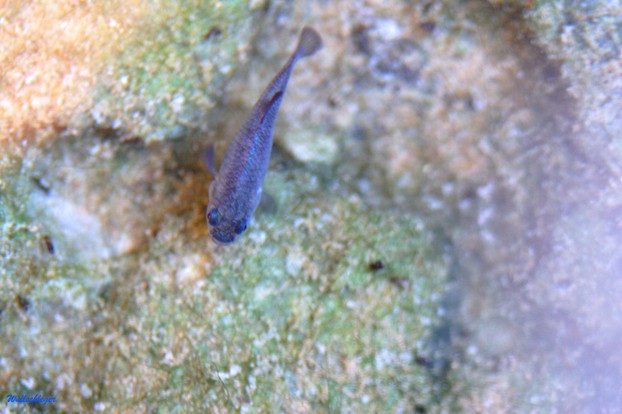Devils Hole Pupfish: USFWS, Public Domain, via Nevada Fish/Wildlife Office-Devils Hole Pupfish Photo Gallery @ http://www.fws.gov/nevada/highlights/nbi/nbi.html
Bare Mountain and Big Dune, Amargosa Valley, Nevada: Ken Lund, CC BY SA 2.0, via Wikimedia Commons @ https://en.wikipedia.org/wiki/File:Big_Dune,_Amargosa_Valley,_Nevada.jpg
Devils Hole Location Map: USFWS, Public Domain, via USFWS Nevada Fish/Wildlife Office-Devils Hole Pupfish Photo Gallery @ http://www.fws.gov/Nevada/protected_species/fish/species/dhp/dhp.html
Devils Hole: USFWS, Public Domain, via USFWS Nevada Fish/Wildlife Office-Devils Hole Pupfish Photo Gallery @ http://www.fws.gov/Nevada/protected_species/fish/species/dhp/dhp_gallery3.html
Devils Hole cut-away graphic: USFWS, Public Domain, via USFWS Nevada Fish/Wildlife Office-Devils Hole Pupfish Photo Gallery @ http://www.fws.gov/Nevada/protected_species/fish/species/dhp/dhp_gallery3.html
Common Barn Owl (Tyto alba): Michele Lamberti, Public Domain, via Flickr @ https://www.flickr.com/photos/60740813@N04/8362934428/
1945 oil on canvas by Greta Kempton (March 22, 1901 – December 10, 1991): Public Domain, via Wikimedia Commons @ https://en.wikipedia.org/wiki/File:HarryTruman.jpg
photo by Olin Feuerbacher: US Geological Survey, Public Domain, via USGS Multimedia Gallery @ https://www.usgs.gov/media/images/endangered-devils-hole-pupfish-0
Crystal Springs, Ash Meadows National Wildlife Refuge: USFWS Headquarters, CC BY 2.0, via Flickr @ https://www.flickr.com/photos/usfwshq/5120920489/
Hoover Dam refugium for Devils Hole Pupfish: USFWS, Public Domain, via USFWS Nevada Fish/Wildlife Office-Devils Hole Pupfish Photo Gallery @ https://www.fws.gov/Nevada/protected_species/fish/species/dhp/dhp_gallery5.html
School Springs refugium, Ash Meadows National Wildlife Refuge: Stan Shebs, CC BY SA 3.0, via Wikimedia Commons @ https://commons.wikimedia.org/wiki/File:Ash_Meadows_School_Springs_Refugium_4.jpg
Ash Meadows Amargosa pupfish: US Geological Survey, Public Domain, via USGS Western Fisheries Research Center @ http://wfrc.usgs.gov/fieldstations/reno/ash_meadows_pupfish.html
spring at Point of Rocks, Ash Meadows National Wildlife Refuge: Stan Shebs, CC BY SA 3.0, via Wikimedia Commons @ https://commons.wikimedia.org/wiki/File:Ash_Meadows_Point_of_Rocks_Springs_3.jpg
female DH pupfish on Las Vegas Strip: USFWS, Public Domain, via USFWS Nevada Fish/Wildlife Office-Devils Hole Pupfish Photo Gallery @ http://www.fws.gov/Nevada/protected_species/fish/species/dhp/dhp_gallery6.html
Willow Beach National Fish Hatchery: USFWS, Public Domain, via USFWS Nevada Fish/Wildlife Office-Devils Hole Pupfish Photo Gallery @ http://www.fws.gov/Nevada/protected_species/fish/species/dhp/dhp_gallery5.html
Ash Meadows National Wildlife Refuge: a buffer zone between Devils Hole and sprawling Las Vegas: Cyndi Souza/USFWS Pacific Southwest Region, CC BY 2.0, via Flickr @ http://www.flickr.com/photos/usfws_pacificsw/5042464095/
Devils Hole Dive Team: USFWS, Public Domain, USFWS Nevada Fish/Wildlife Office-Devils Hole Pupfish Photo Gallery @ http://www.fws.gov/Nevada/protected_species/fish/species/dhp/dhp_gallery2.html
USGS Multimedia Gallery Video: Devils Hole Pupfish--Shaken, not Stirred @ https://www.usgs.gov/media/videos/devils-hole-pupfish-shaken-not-stirred
Ambre Chaudoin: photo by Olin Feuerbacher/US Geological Survey: Public Domain, via USGS Cooperative Fish and Wildlife Research Units @ https://www1.usgs.gov/coopunits/staff/479066
Devils Hole Pupfish: USFWS, Public Domain, via USFWS Nevada Fish/Wildlife Office-Devils Hole Pupfish Photo Gallery @ http://www.fws.gov/Nevada/protected_species/fish/species/dhp/dhp_gallery2.html
photo by Olin Feuerbacher: USFWS, Public Domain, via USFWS Nevada Fish/Wildlife Office-DHP Photo Gallery @ http://www.fws.gov/Nevada/protected_species/fish/species/dhp/dhp_gallery1.html
FWSPacificSouthWest: Devils Hole Pupfish ~ Uploaded to YouTube on September 21, 2011 ~ Length: 3:15; https://www.youtube.com/watch?v=OMZgrLiTSZE
Devils Hole Pupfish and their habitat: National Park Service illustration: National Park Science, Public Domain, NPS Nature and Science @ http://www.nps.gov/deva/naturescience/devils-hole.htm
Ash Meadows milkvetch (Astragalus phoenix) ~ south of Crystal Reservoir: Stan Shebs, CC BY SA 3.0, via Wikimedia Commons @ https://en.wikipedia.org/wiki/File:Astragalus_phoenix_3.jpg
Crystal Spring, Ash Meadows National Wildlife Refuge: Stan Shebs, CC BY SA 3.0, via Wikimedia Commons @ https://commons.wikimedia.org/wiki/File:Ash_Meadows_Crystal_Spring_2.jpg
photo by Olin Feuerbacher/US Geological Survey: Public Domain, via USGS Multimedia Gallery @ https://www.usgs.gov/media/images/endangered-devils-hole-pupfish
































 Are Hawaiian Huakai Po Nightmarchers Avenging Halloween Thursday?on 10/02/2024
Are Hawaiian Huakai Po Nightmarchers Avenging Halloween Thursday?on 10/02/2024
 Mailing Addresses for 2023 Form 4868 Extending 1040 and 1040SR April 15, 2024, Due Dateon 04/15/2024
Mailing Addresses for 2023 Form 4868 Extending 1040 and 1040SR April 15, 2024, Due Dateon 04/15/2024
 Mailing Addresses for 2023 Forms 1040 and 1040SR Filed in 2024on 04/15/2024
Mailing Addresses for 2023 Forms 1040 and 1040SR Filed in 2024on 04/15/2024
 Mailing Addresses for 2022 Form 4868 Extending 1040 and 1040SR April 18, 2023, Due Dateon 04/13/2023
Mailing Addresses for 2022 Form 4868 Extending 1040 and 1040SR April 18, 2023, Due Dateon 04/13/2023



Comments